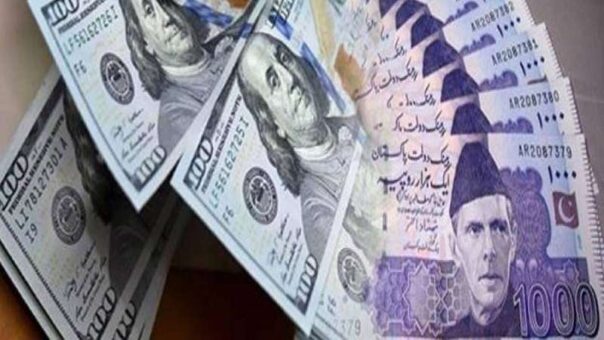Karachi, April 17, 2024 – The Pakistani Rupee (PKR) continued its downward trajectory against the US dollar on Wednesday, marking its third consecutive fall to end at PKR 278.40 at the interbank foreign exchange market.
The rupee depreciated by PKR 0.11 against the dollar compared to the previous day’s closing rate of PKR 278.29. Currency experts attributed the rupee’s decline to persistent pressure stemming from high import payments and corporate demand, particularly following the holidays of Eid-ul-Fitr.
Since April 9, 2024, when the rupee closed at PKR 277.94 against the dollar, the local currency has witnessed a continuous decline, reflecting ongoing challenges in the foreign exchange market.
Recent developments, such as the State Bank of Pakistan’s (SBP) payment of $1 billion against international bonds, have further exacerbated pressure on the exchange market. This significant payment has strained foreign exchange reserves, leading to increased demand for the dollar.
Analysts anticipate a notable decline in the SBP’s foreign exchange reserves in the coming weeks following the reconciliation of the latest foreign payment. The pressure on reserves is expected to persist as Pakistan grapples with external debt obligations and other financial commitments.
While Pakistan’s foreign exchange reserves recorded a marginal increase of $62 million to $13.44 billion by the week ending April 5, 2024, concerns remain regarding the stability of the nation’s currency. The central bank’s reserves remained relatively stable at $8.04 billion during the same period, signaling efforts to manage liquidity and stabilize the currency.
The fluctuations in the exchange rate have far-reaching implications for various sectors of the economy. Importers face higher costs as the rupee depreciates, impacting the prices of imported goods and raw materials. Conversely, exporters may benefit from a weaker rupee as it enhances the competitiveness of their products in international markets.
Investors are closely monitoring the situation, evaluating the impact of currency fluctuations on their portfolios and investment strategies. The volatility in the exchange market underscores the importance of robust risk management and diversification for investors, particularly those with exposure to foreign currencies and assets.
Government officials and policymakers are expected to closely monitor exchange rate dynamics and implement measures to stabilize the currency and bolster foreign exchange reserves. Efforts to attract foreign investment, boost exports, and enhance economic resilience will be essential in mitigating the challenges posed by exchange rate volatility and external pressures.
As the exchange rate remains susceptible to various internal and external factors, market participants are advised to remain vigilant and adapt to changing conditions. While challenges persist, proactive measures and prudent economic policies can help navigate uncertainties and foster long-term stability in the currency market.
